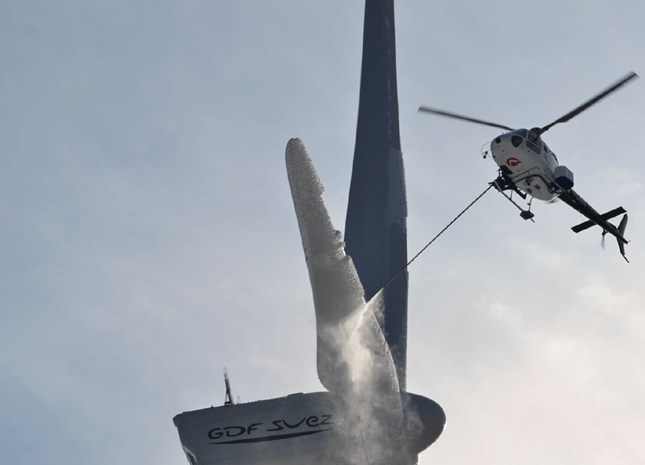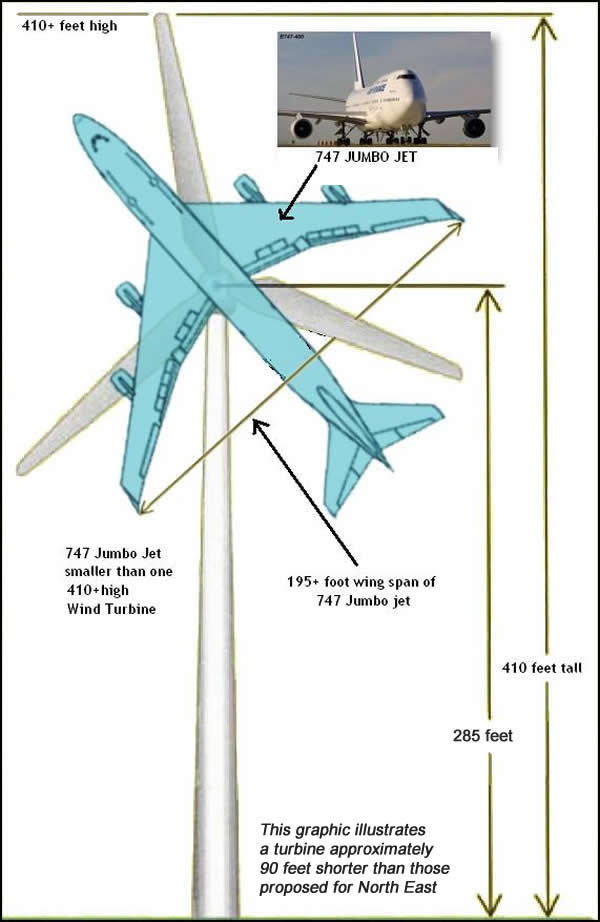I’m just a chemical and materials engineer, not an environmental engineer so I’m no expert on this topic.
I’m just curious what the environmental impact is of spraying thousands of gallons of ethanol and glycol on wind turbine blades from helicopters?
More or less than burning natural gas?
I know this picture is from France, but this is the standard for how deicing is done, so we know it’s being done in Texas this way too?
Update:
Just to give you a sense of scale:
Now consider that there are more than 13,000 wind turbines in Texas.
For comparison, only 1,550 747s have ever been built.
So just how much decier is being sprayed in Texas right now.
That deicer is toxic, so how much will land on grass that will be used to feed cattle or is eaten by other wildlife?
Seems like burning natural gas is cleaner.



MUST. PRESERVE. NARRATIVE. AT. ALL. COSTS.
Unfortunately, those who’ve embed the Kool-Aid will have no problems with this. Nor will they mind the mining that goes into turbine (or battery or panel) production.
If it saves one insect!
Well… there’s great concern over VOC emissions from winter windshield-washer fluid, and ethanol emissions from bakeries, and ethylene glycol is a well-known nasty poison and a threat to wildlife, so obviously this is a great big problem.
Except that this is different, because it’s For A Good Cause.
Like you said, they deice planes the same way, with a few key differences.
One, planes are much bigger. My uneducated guess is 1 plane = 20+ turbines. That’s an easy equation though, because the end result would reveal the difference in liquid used on planes versus turbines with all the known numbers of each. And yes, there are probably many more turbines.
The biggest waste is probably in the helicopters. Planes are easy cuz they’re grounded, 4 trucks can deice a plane in 15 minutes or so. And the trucks can park and not consume fuel constantly, *and* don’t need refilling of fuel and deice liquid as often.
After all is said and done, wind power saving us all is a joke. It’s passed off as a magic solution that is unbelievably cheap and simple while ignoring all the extra maintenance they need just to work.
Commercial airliners are not much bigger than modern wind turbines.
Wingspan of a 747 is ~ 60 m.
The length of a wind turbine blade can reach 100 m, with the more typical being around 60 m.
So, no, it’s a lot closer to 1:1 or 2:1 than 20:1.
Most turbine blades are 60 to 120 feet long. By 10 ish or so feet wide at the base. When they reach the end of thier life they bury them in Wyoming…. we have a bunch here out in the bushes cause heaven forbid the beautiful people SEE them. A bunch of island dwellers here got together and had 2 installed cause “local power co ripoff, save the frighin trees “ crowd thot itll be “wonderful”. Now all they do is bitch n mmoan cause it goes whoosh whoosh whoosh whoosh 24/7. Someday asshats will learn.
Last I heard Texas gets 20% power from wind and it cant keep up with that
Curvy, that’s accurate or thereabouts. Here’s a pull quote from the news with the calamity going on in Houston at the moment with respect to power being off for about 1.3million folks:
“ Officials said about 45,000 megawatts of power is missing from the system right now. About 16,000 of that is from renewable resources like wind and solar and about 30,000 of that is from more nonrenewable resources like natural gas and coal”
So, 33% of what’s missing is “green”. Apparently we are destined to eat synthetic beef in the dark and cold, as one of our hosts so adroitly stated.
The environmental impact of the de-icing pales in comparison to all the unrecyclabe blades going to landfills after 10, max 20 years of life.
I wonder what is the turbine output per the life of a blade versus the energy required for blade production, transport of these monsters across continents, installation, followed by removal (helicopters) , cutting and transporting across the country, and then carefully laying the train car-sized pieces out to maximize space and minimize movement.
What’s the fuel burn rate on that helicopter, in kilometers per hour? What’s the carbon content of aviation kerosene?
I dunno. But, I’m guessing the answer to both questions would make St. Greta quite unhappy.
…you say that (St. Greta uhhappy), as it might be a bad thing….
It’s ok because they are using recycled glycol, and the helicopter runs on unicorn farts.
P.S. Note how they always talk about wind and solar capacity based on the rating under optimum conditions. No mention of average capacity, reduced capacity due to weather, maintenance downtime, or for solar, the surprising fact that the sun doesn’t shine half the time.
Much like COVID, the people making these decisions do not care. they are not interested.
Unintended consequences of wind power are not a consideration. End of story. Green energy will save the world. Period. Benefits will outweigh any drawbacks by a thousand, maybe a million fold.
Bringing up something like poisoning the very earth that you are trying to save makes you a right wing nutjob who wants to pollute because it brings you profits.
One other angle is that aircraft deicing is done at airports, and nearly all of the liquid used is captured. I don’t know if it’s recycled or disposed of, but it certainly doesn’t just run off into the dirt, not in Western countries anyway. Windmill deicing doesn’t have that benefit. I suppose it could be done, if you buit catch basins around the tower sites, but those don’t exist now. And for windmills on hilltops it would be tricky to do so.
I was reminded that Texas has its own power grid, with no significant connection to the main eastern and western US grids. That has some benefits (including political ones) but it also means that when there is a statewide supply crunch as happened here, they can’t get help from other parts of the country that aren’t affected by the regional bad weather.
A couple of ounces of ethylene glycol will kill you if you ingest it. And the alcohol disguises the sweet taste so animals will lick it up.